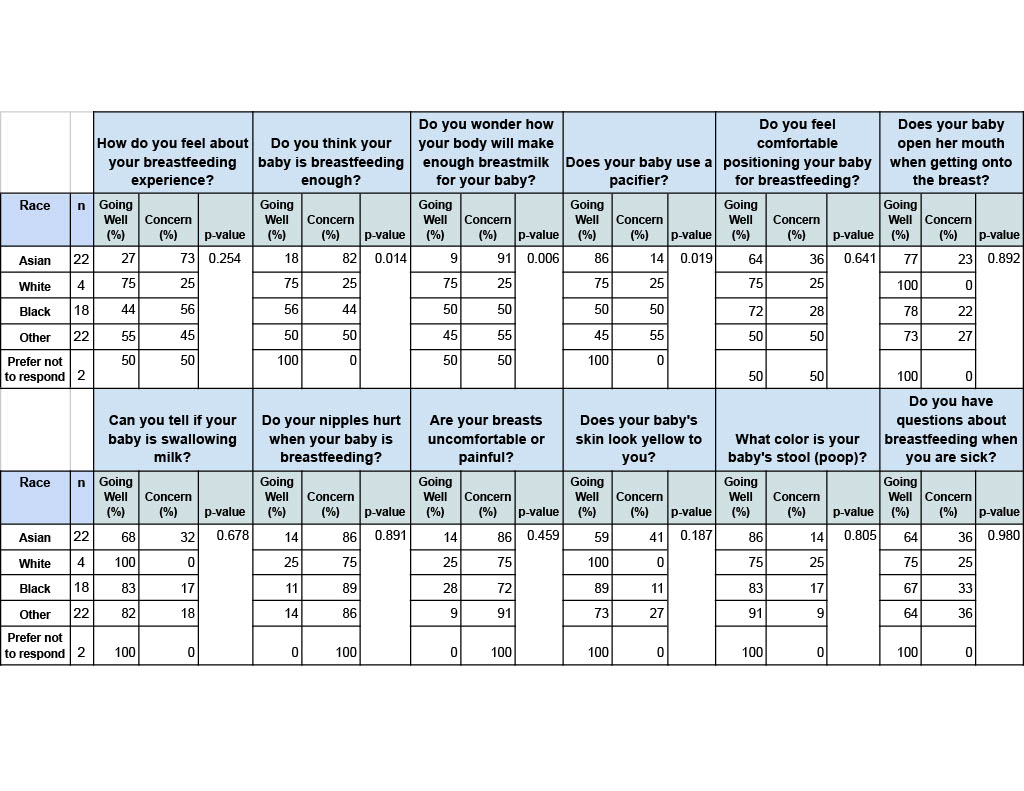Breastfeeding/Human Milk
Session: Breastfeeding/Human Milk 1: Breastfeeding
472 - Breastfeeding Concerns Among a Diverse Population of Mothers
Sunday, May 5, 2024
3:30 PM - 6:00 PM ET
Poster Number: 472
Publication Number: 472.1977
Publication Number: 472.1977

Henry Bernstein, DO, MHCM
Professor of Pediatrics
Cohen Children's Medical Center
Cohen Children's Medical Center
Princeton, New Jersey, United States
Presenting Author(s)
Background: Breastfeeding perceptions, experiences, and outcomes vary among mothers of different demographics.
Objective: To explore maternal breastfeeding concerns identified at their first ambulatory post-discharge newborn visit among a diverse population of mothers.
Design/Methods: Data were collected on healthy breastfeeding mothers participating in a randomized controlled trial of breastfeeding promotion. Eligibility criteria included mothers 17 years and older with healthy full-term infants at 7 days of age or less at enrollment. Self-reported demographic and maternal characteristics were assessed. Mothers completed an online educational module at the initial newborn visit that asks 12 breastfeeding questions; each response is categorized as “Going Well” or “Concern”. We also calculated the total number of concerns. The relationship between participant demographics and breastfeeding concerns was analyzed using Chi-square, Fisher Exact Test, 2-sample t-tests or ANOVA.
Results: Data from 68 mothers showed racial, ethnic, and socioeconomic diversity – 26% Black, 32% Asian, 6% White, 32% Other, 3% Prefer not to respond; 22% Hispanic; 46% had less than a bachelor's degree and 26% were enrolled in WIC. Out of a possible 12 breastfeeding concerns, the median number of concerns was 6 (range 0 to 11). Mothers most often expressed concerns about her nipples hurting when the baby was breastfeeding (87%) and having uncomfortable or painful breasts (84%). Mothers had the least concerns about whether they could tell the baby was swallowing milk (21%) and the baby's stool color (13%). There were no statistically significant differences among mothers in the total number of breastfeeding concerns based on race, ethnicity, education, WIC, or maternal age (p>0.05). Table 1 presents the breastfeeding questions asked in the online education module with the racial breakdown of responses by percent. Compared with other racial groups, Asian mothers were more likely to be concerned that their baby wasn’t breastfeeding enough (p = 0.014); that their body wasn't making enough breast milk (p = 0.006); and about the pacifier use of their baby (p = 0.019). In addition, Asian mothers were less likely to be exclusively breastfeeding (Asian 14%, White 100%, Black 56%, Other 50%, Prefer not to respond 0%; p = 0.001).
Conclusion(s): Breastfeeding concerns varied among our diverse population, particularly by race. Assessing and addressing the concerns of specific populations during each well baby visit may help improve breastfeeding outcomes.

